|

By Ian Cushway, 29th November 2019
E-Type Buyer's Guide
How to catch the coolest cat of them all!
Believe it or not the popularity of the E-Type has waxed and waned over the years. Despite their huge desirability now, lots were given superficial makeovers by those wanting to make a fast buck in the ‘80s. So with this in mind you need to tread carefully when buying one. Take your eye off the ball and you'll be spending good money on a car that will probably need restoring all over again.
Certainly, E-Type values have rocketed in recent years but it's never too late to take the plunge. In fact, as we've launched our brand new E-Type catalogue, there's never been a better time than now to pursue your dream. Order your very own free E-Type catalogue today!
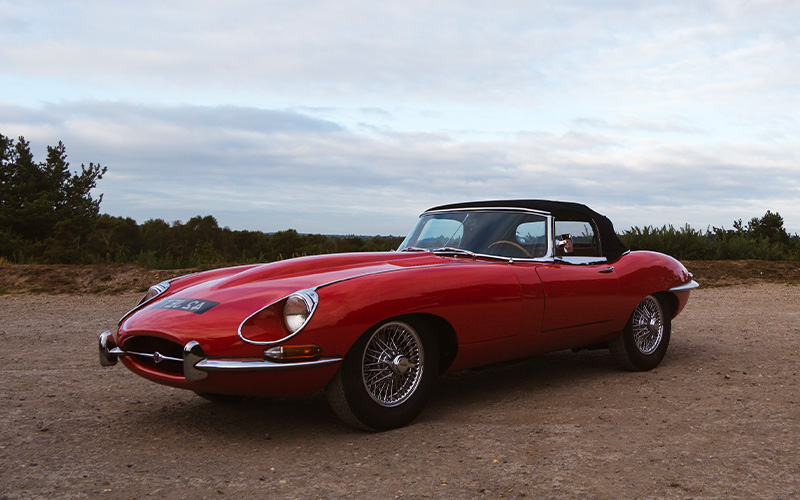
Credit: Photo by Moss Europe Ltd
Inevitably, you’ll be spending a significant sum on what's become a national treasure, so unless you become a walking E-type encyclopedia, we recommend roping in the help of a Jaguar specialist, or a knowledgeable existing owner when viewing cars for sale. However, here's some insider wisdom that will help you on your quest to sort the nuggets from the nails.
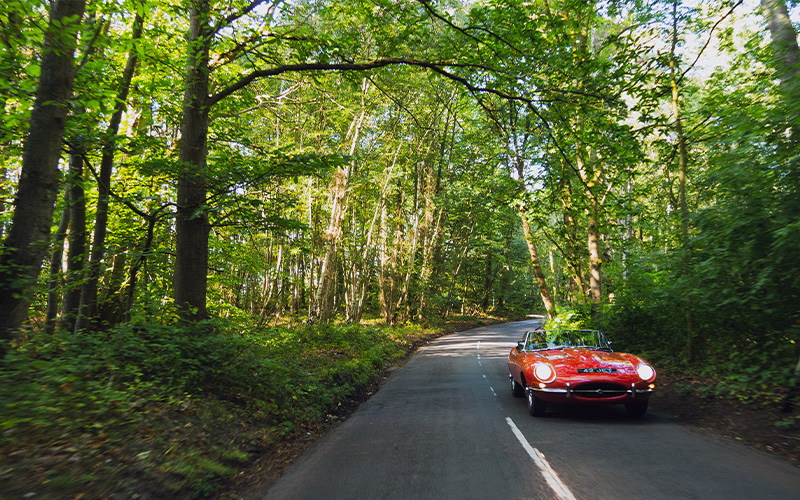
Credit: Photo by Moss Europe Ltd
Decisions, decisions...
We all dream of owning an E-type, right? But which model? While the coupé with its unmistakable profile oozes style and sophistication, ignoring the wind-through-the-hair appeal of the roadster is just too much of a compromise for many.
There's always a premium to pay for the latter, though, especially if you hanker after something like a roadster flat floor Series 1 3.8 which are now the preserve of the classic car elite.
Then, you need to decide on what engine and era of E will satisfy your craving when it comes to owning what's undoubtedly the most instantly recognisable sports car of all time. Lots will depend on how much is in the coffers, but to recap there's the pure-looking Series 1, the heavily revised Series 2 (from 1968) with its raised one-piece bumpers, or the vastly different again Series 3 that followed in 1971. That's the one with the even bigger, chrome-barred air intake, more upright windscreen, flared arches and the V12 engine.
Oh, and let's not forget the 2+2, which made its debut in 1966. The Series 3 inherited its longer wheelbase and higher roofline from this model and while it’s not as pretty as the coupé, it adds a modicum of practicality, is more comfortable to drive and cheaper than the other cars.
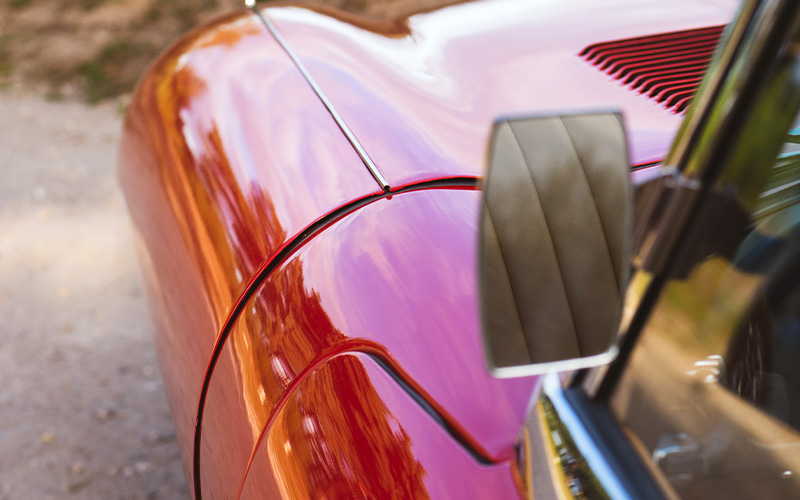
Credit: Photo by Moss Europe Ltd
Panel perfect?
Yes, it’s beautiful, but it still rusts and a proper restoration isn’t for the feint hearted. When buying, forget about everything else for a moment and focus on assessing the likely extent of any corrosion and – more importantly – the quality of previous restoration work. Apart from spotting paintwork imperfections, ripples and bubbling under the paint surface, the even-ness of panel gaps, seams and general panel alignment will provide a good clue as to what's been done in the past, and how well it's been executed. The forward hinged one-piece bonnet is a complex work of art and rusts around the seams, so pay it special attention – and the front valance is also prone to attack by tinworm. The tubular frame that the engine and suspension are mounted to can also rust from the inside, so look closely for signs of stress fractures. It's made of Reynolds 541 square section tubing and should be replaced rather than repaired. Climb underneath if you can and check where the radius arms meet the floorplan which is another rot spot which is often bodged. Other areas to check include the floorpans, door bottoms, rear suspension mountings and the boot floor. And if any of them need replacing then we stock a range of repair panels.
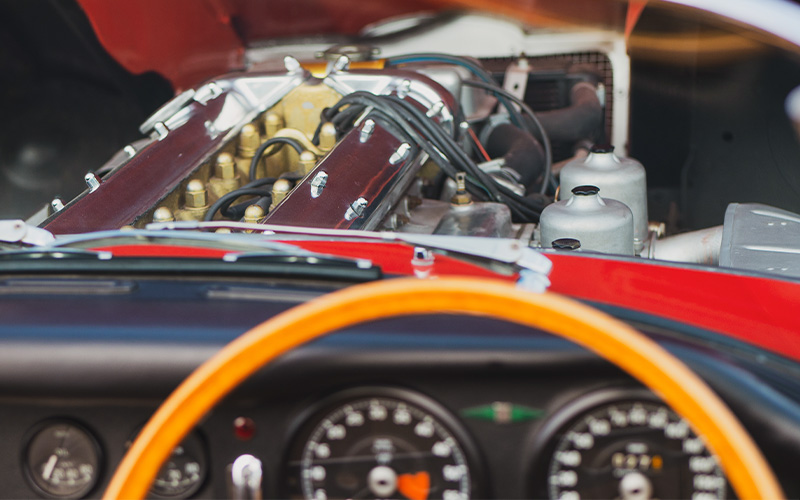
Credit: Photo by Moss Europe Ltd
Power to the people
The E-type's straight six is long-lasting just as long as it's been looked after, so be wary of an unknown unit that’s bereft of history or documented evidence of recent servicing. Head gasket issues are common, so look for the tell-tale water stains on the block. We stock a range of gaskets. Meanwhile, any rattling will point to worn timing chains and tensioners. Beware though, they're not particularly straightforward to replace.
Otherwise, it’s a case of going through the usual checks with military precision; that means looking for evidence of wear like blue smoke, low oil pressure and worrying rattles, as well as signs of overheating, oil leaks (the main one to worry about being the rear ‘rope’ seal) and owners having ignored regular anti-freeze changes. If the coolant’s a muddy colour – be suspicious. Regarding oil pressure, it should be around 40psi at 3000rpm. Any lower, and chances are you will need a rebuild. Meanwhile, rough running could be down to worn diaphragms in one of the SU carbs which are a fiddle to adjust.
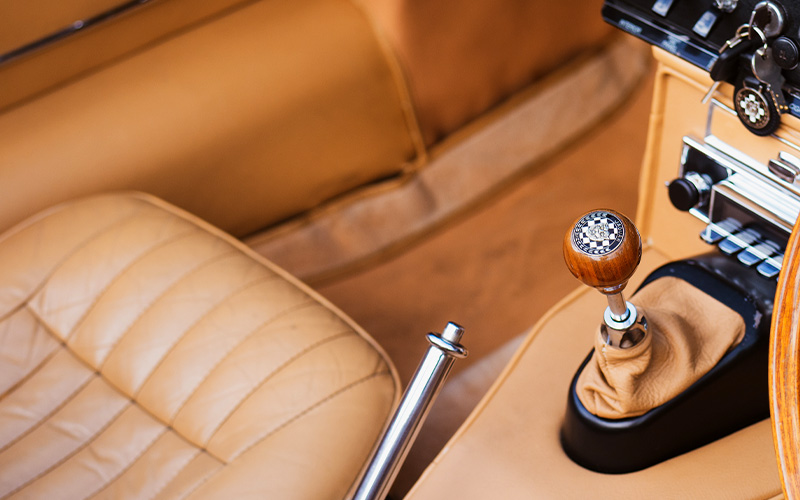
Credit: Photo by Moss Europe Ltd
Get in gear
The unit on a 3.8 has no synchromesh and isn’t particularly nice to use. They can also become noisy and jump out of gear, in which case a replacement unit or rebuild will be required. From the 4.2, Jaguar’s own build ‘box was much better, and spares are more abundant. Replacing the clutch is a big job, as it involves removing the engine and gearbox which in turn involves whipping off the bonnet. The Borg Warner autos are robust, but check the kickdown and beware of any hesitation going up or down the cogs. The fluid should be bright red, not brown with a burnt smell when you sniff it.
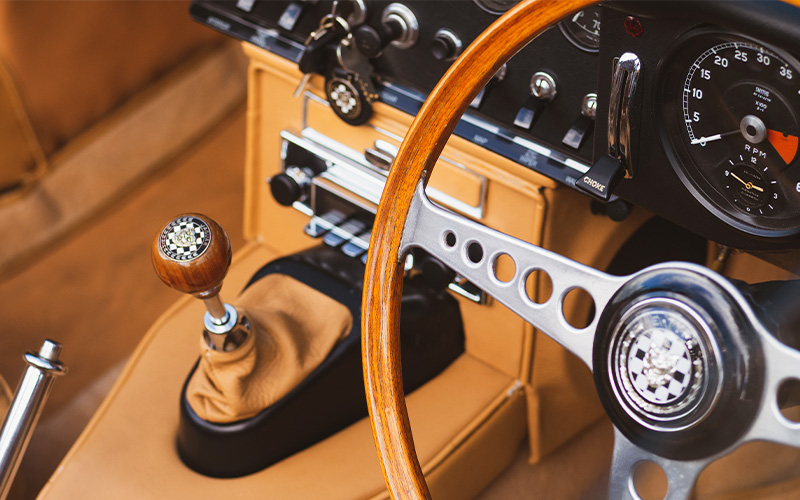
Credit: Photo by Moss Europe Ltd
Suspension/steering
There's a double wishbone arrangement at the front, with rack and pinion steering, and a complex independent set-up at the rear in a pressed steel cage mounted to the floorpan. Ideally, with each wheel off the ground, or with the car on a lift, check the condition of the wheel splines (wire wheels), the Metalastik steering rack mounts, wheel bearings and anti-roll bar bushes. Eyeball the steering rack gaiters for splits; any play in the column will be worn bearings. Also, check for play in the lower and upper wishbones and axle cage mounts at the rear, as well as leaks from the four rear dampers. Coil springs can snap as well, so here is our range of steering and suspension components.
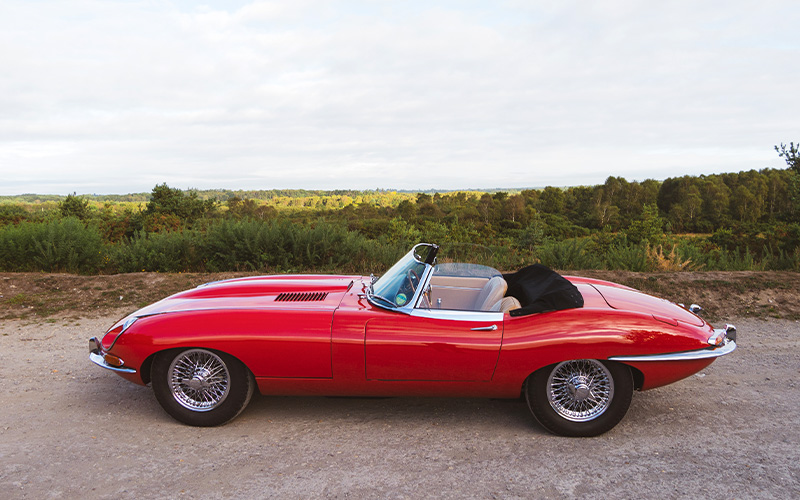
Credit: Photo by Moss Europe Ltd
Braking bad?
Here it's a case of ensuring an E pulls up straight without fuss and that the discs and pads aren't too worn. If they are, don't panic, we stock a range of replacement brake pads although you will need to drop the rear suspension to get to them which is a bit more involved. Oh, and if those inboard rear discs are contaminated by oil from a leaky diff you will need to replace them. The self-adjusting handbrake can also prove a problem if seized. Series I stoppers were never brilliant, so look upon any upgrades with glee.
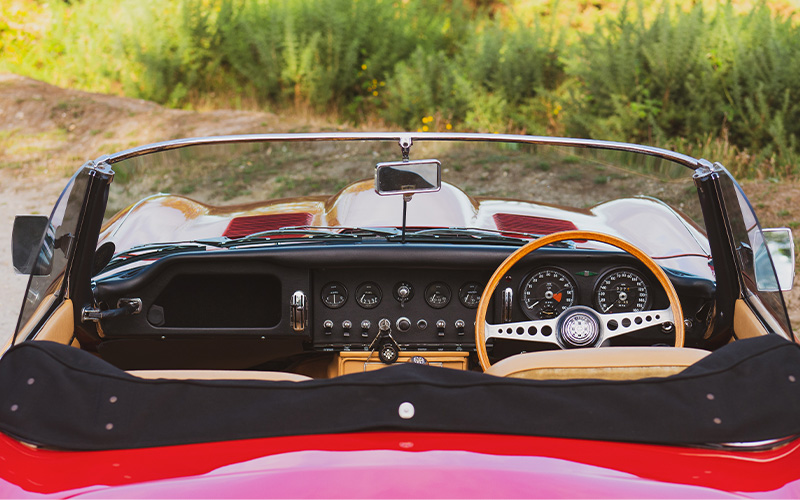
Credit: Photo by Moss Europe Ltd
Inside story
If you’re spending big bucks, be sure to have done your homework first so you can be super picky about originality. Bear in mind, the seats and dash on a US import from a hot state will inevitably be looking a little frilly around the edges by now. The good news is that virtually everything in the way of trim is available so in theory it won't take long to tidy up a shabby looking E-type with interior bits missing. View our range of seat covers, carpets, trim and headlining.
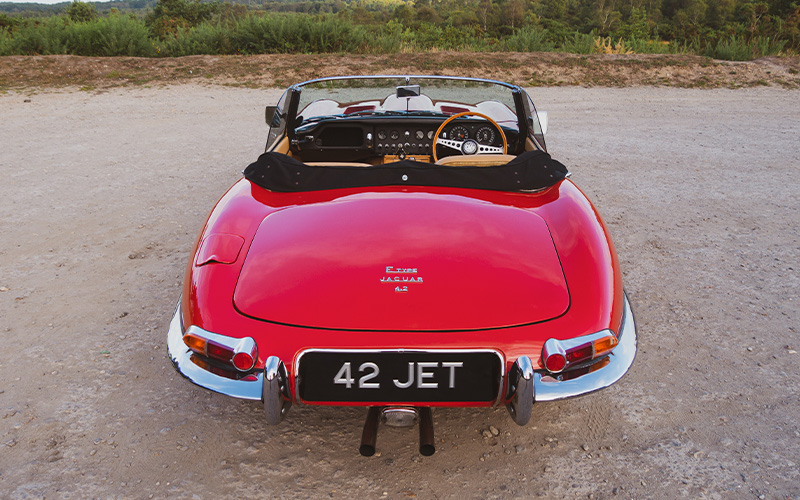
Credit: Photo by Moss Europe Ltd
How Much?
Ah, the million-dollar question. Unsurprisingly the world’s sexiest car doesn’t come cheap. In a crude pecking order, early open top cars command the highest prices followed by the coupes, with 2+2s being the cheapest. That said, the Series I 2+2s still command good money, but the bargains can be found among the S2s & 3s, with examples fitted with auto boxes being at the bottom of the pile.
Rare flat floorpan cars with cowled headlamps will be well over £100,000 – and restored roadsters might be £150,000. A really nice Series 1 4.2 roadster won’t be far off this either now. However, if you can live with the less pure looks, the cheaper S2 is a good bet as they are nicer to drive with more comfortable seats, a nicer ‘box and better cooling. Tidy coupés begin at £60,000, while a topless version will demand a £20,000-£30,000 premium. A later V12 coupé might be as little as £35,000 but at that price it will need work. At the bottom of the pile a S2 2+2 can still be purchased for £30,000, with iffy cars with auto available from £20,000. Projects exist, but with the competition for parts you will still have to fork out at least £25,000 for a Series 2 barnfind. Dry state US imports make a lot of sense and can save on bodywork repairs, as long as you don't take their rust-free Californian provenance for granted. They could be from Louisiana & full of filler.
Whatever E you end up with, as long as you've bought wisely in the first place, you won't look back. And with such strong parts support, once you've got a good 'un it won't cost a king's ransom to keep.

Keep up with all the latest from Moss on our social pages
|
|













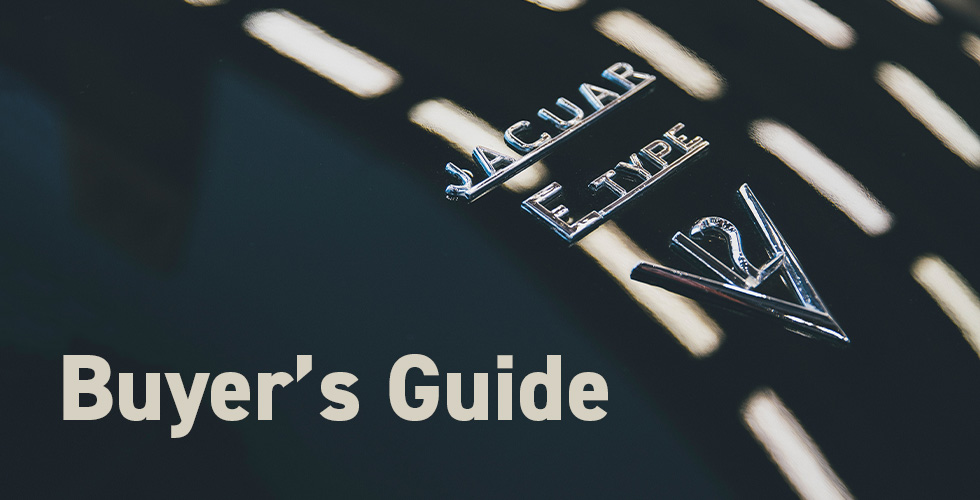



